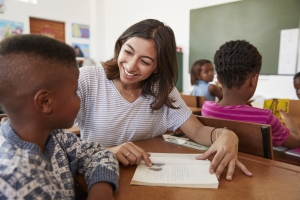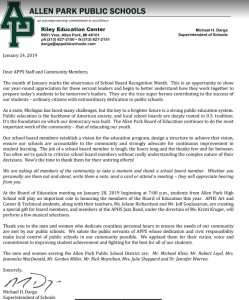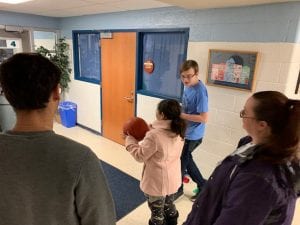Big Thanks to Nicole for doing another excellent job in organizing this year’s Arno Olympics!
Coming soon to Arno…
Feb. 4
No events
Feb. 5
MTSS group full day
Feb. 6
P/T Conf 5:00
Feb. 7
P/T Conf 5:00
NWEA Reward Assembly 2:00
Feb. 8
NWEA reward movie 1:45
Feb. 11
Spirit Week starts
Ad Council 9:00
Nwea Rewards Recess 1:45
Feb. 12
Data Dive
Feb. 13
PBIS meeting 7:45
Data Dive
Skating Party 6:00
Feb. 14
Happy Valentines Day!

Feb. 15
Early Dismissal 11:30- Teacher PD
Arno Vision
Arno Elementary will provide a system of
support to empower and inspire students to become
collaborative learners that strive for academic excellence-
***NWEA Reward assembly has been rescheduled to Feb 7 at 2:00- Don’t forget to order your MSTEP shirts ASAP from Rachel.
STAFF SURVEY
It is that time again, our annual staff survey will be active from Jan. 18-Feb 7 for staff, students, and parents. We primarily use our survey results to inform the school improvement plan and take a careful look at things we may need to change.
We will once again only survey grades 3-5, and I would like that to just be completed during their tech time. Please see your staff link below, I would love to see lots of staff completing it, it should not take you long.
https://eprovesurveys.advanc-ed.org/surveys/#/action/95817/20337
Let kickoff M-STEP Season…
MSTEP Resource Page: https://www.michigan.gov/mde/0,4615,7-140-22709_70117—,00.html
Why do you need a literacy coach?
**Don’t forget to meet with Barb in February to help meet your needs
Here are some of the reasons you might call upon your literacy coach:
- Materials: If your literacy coach doesn’t know where it is, it must not exist! They can help you find what you need or put you on the right track so that you can focus on teaching students.
- Data: Are you seeing a trend in students’ scores or worried about an underreported reading issue? Your literacy coach can analyze this with you, help you understand the results, and get you on the right instructional path. They can also help you place students in Iowa’s Multi-Tiered System of Supports (MTSS) in order to intervene as quickly and efficiently as possible.
- Screening: Literacy coaches often monitor, proctor, or assess students. When it comes to universal screening or diagnostic testing, your literacy coach should know the assessments and benchmarks.
- Research or evidence: Is it cute, or does it count? Teachers these days must focus on what works. Your literacy coach should be able to help you find the latest and greatest techniques that are backed by research and evidence (not Pinterest) to help your students meet and master standards.
- Roadblock: Sometimes great techniques don’t work for certain groups of students. Your literacy coach can get you out of that rut by sharing things they have seen, help you network with others, or arrange a time for you to see great teaching in action just down the hall. Don’t just Google it. Most likely your literacy coach can send it your way and save you precious time. We all need more of that!
How can a literacy coach help you?
If you’re not already convinced, here is a look at some of the more structured duties that a literacy coach could perform:
- Observation: This is most effective when the technique has been tried several times but is just not going right. Remember, literacy coaches are not evaluators. They observe to see how you can best implement building and/or district efforts in your teaching. Talking with your literacy coach beforehand will set the stage and prepare them to observe what you are striving to improve.
- Feedback: As an outside eye, your literacy coach may see things that you do not. This is not a bad thing! With a preconference, they will know what your goals are and how to assist you grow as a professional. Always be prepared for next steps. Teachers are lifelong learners.
- Modeling: Not quite sure how a strategy should be taught or how a skill or standard is most likely acquired by students? Ask your literacy coach to teach to a group of students while you watch for important components. This is a chance for you to see that specific task in action from the outside.
- Reflection: This is one of the most powerful parts of the teacher/coach partnership. You often learn from yourself, and your literacy coach can facilitate this. Change is necessary for us to grow.
- Professional development: Teachers don’t have enough time to prepare and plan—let alone read about all of the latest educational fads. Literacy coaches should know the focus of the district or school. They can provide you with the resources you need for professional growth that will benefit you and keep you on track.
As you might have noticed, all of this cannot take place without relationships. Don’t hesitate to be real with your literacy coach. As instructors, we all need someone to lean on from time to time. Your literacy coach is on your side! As they say, “The more, the merrier,” and the best part is, we all get to work together to increase reading achievement for students.
In Preparation for our February PD
How to Help Students Dealing with Adversity
Education researcher Patricia Jennings explains how teachers can effectively support traumatized kids in their classrooms.
Six-year-old Jada feels a persistent expectation of danger. She overreacts to provocative situations and has difficulty managing her emotions, which often flare up without warning. To her teachers, Jada appears touchy, temperamental, and aggressive. She is easily frustrated, which makes her susceptible to bullying. When something happens at school that triggers Jada, she may lash out in fury.

How can teachers manage a kid like Jada who may have suffered trauma, but whose emotional reactions make it difficult for her to learn? Not by getting angry, for sure. That would just trigger her, because she’s hypersensitive to criticism.
In my new book, The Trauma-Sensitive Classroom, I present key, alternative strategies teachers and schools can use to help kids who’ve experienced trauma to do better in school. I’ve found that when teachers recognize the symptoms of trauma, build supportive relationships and classroom environments, and build upon strengths to help traumatized kids learn self-regulation, they can play an important role in helping them heal.
How can teachers do that while still managing a roomful of other kids? It can feel overwhelming to contemplate, but many of the strategies are useful no matter who is in your classroom. And, as long as you couple them with care for your own well-being, they are certainly worth the effort.
Here are some of the suggestions I make in my book.
1. Build supportive relationships in the classroom
As human beings, the most important factor for our survival is supportive relationships. But trauma and adversity can disrupt the development of the important bonds that children need to reach their full potential. Fragmented families and communities make it harder for children and teens to find attachment figures to connect with, leaving many kids unmoored.
To support children and teens exposed to trauma and adversity, we can demonstrate alternative working models of relationships by building social trust. While a warm and supportive classroom environment is beneficial to all students, for students exposed to trauma and adversity, it’s a necessity. Teachers can make efforts to get to know each student individually, their strengths and challenges. They can pay special attention to the classroom social network, promote positive peer relationships, and teach and reinforce kindness and respect, while avoiding competitive situations that create social hierarchies.
Teachers can build relationships with students by practicing a mind shift—one that focuses on students’ strengths rather than their weaknesses. Instead of asking yourself, “What’s wrong with him?” when a student exhibits difficulties, ask yourself, “What happened to him and how did he learn to adapt to it?” Reframing in this way will help you to understand where he is coming from and how best to help him.
It’s best not to ask students who’ve misbehaved, “Why did you do that?”—because their behavior may be as perplexing to them as it may be to you! Educators need to understand that exposure to trauma often impairs self-awareness, self-regulation, and perspective taking, which interferes with these students’ ability to understand or explain reasons for their behavior.
If teachers can move away from blame, and provide warmth, empathy, and a respect for students’ strengths, it will go a long way toward building positive relationships in the classroom.
2. Create safe spaces
Effective treatment of complex trauma requires coordinated community systems that can effectively identify, treat, and provide support for children, teens, and families. The first order of business in building a trauma-sensitive school is creating a safe environment for all concerned.
What does that mean? It means that all students feel protected by and connected to their teachers and the school community, and that rules for the students are always fair, made with their needs in mind.
At the classroom level, teachers can help build safety by creating fair, logical rules that are consistently reinforced. For children exposed to trauma, this is particularly important, because they come from homes where rules may be associated with arbitrariness and severe punishment. It may help to use the word “expectations” rather than “rules” to communicate with students in a way that is less likely to trigger them.
Since children exposed to trauma often feel powerless around what’s happening in their lives, having them participate in creating classroom rules, and giving them choices and alternatives when making assignments, can help empower them. However, it’s important not to lower your academic expectations. I have witnessed teachers give trauma-exposed students a coloring worksheet as an alternative to a math assignment out of fear that the assignment might trigger an outburst. While offering alternative assignments may be helpful at times, the alternatives must give the student an appropriate opportunity to learn the same material.
What can teachers do when students act out? While you must always address behavior that disrupts the learning process, it’s important not to rupture the students’ connection with the school community. Exclusionary policies, such as suspension and expulsion, only reinforce students’ feelings of rejection and low self- worth.
Instead, give students the opportunity to calm down by de-escalating the situation. Recognize that such behavior may be adaptive in their home environment and they may need support to learn adaptive strategies that are appropriate for the school environment. Alternative strategies include inviting the student to take some “time in” to settle and calm down, either in the classroom “peace corner” or in a “resilience room,” a place set up to give students space to self-regulate at their own pace.
3. Build upon strengths by supporting self-regulation
Hypervigilance, hyperarousal, and a tendency to disassociate—these are all ways students who’ve been exposed to traumatic environments try to adapt. Unfortunately, while being adaptive in some stressful environments, they can interfere with a student’s ability to focus their attention on schoolwork.
To support students exposed to trauma and adversity, teachers can help them learn to understand and manage their emotions better—both directly and indirectly. For example, you can monitor your students for signs of hyperarousal and use soothing talk to help them calm down. You can also teach calming strategies such as simple mindful awareness and relaxation practices, which help all students to deal with difficult feelings. Having a meditation or compassion-based practice yourself prepares you to teach practices to students and maintain your own resilience at the same time.
Be careful to avoid situations that are confusing, chaotic, or erratic. If these situations do arise, try to prepare these children in advance. Here is an example of how this might be done:
Let’s say that you learn of an upcoming fire drill, and you fear that it will set off a student. While all students deserve a warning, you can give special support to a student who may be particularly frightened. Taking her aside during early morning recess and explaining what will happen can help avert a meltdown. Also, asking the student to take a leadership role—perhaps leading the other students as you walk out of the classroom—gives her a chance to feel empowered in the situation. Giving her a last warning just before the fire drill happens and preparing for her special role can help her to build some self-confidence.
Exposure to trauma and adversity during childhood and adolescence has a significant impact on a child’s development, often interfering with learning and social and emotional functioning. While children may have learned to cope with a stressful environment in adaptive ways, their coping strategies can pose challenges to learning in school environments, especially if schools are not employing trauma-sensitive practices.
Schools can play an important role in helping students heal by recognizing and building upon their strengths and by building supportive relationships, creating safe and caring learning environments, and supporting their development of self-regulation. This requires adults who are committed to caring for themselves first, so they have the resilience to be compassionate in their teaching.
While this is not always an easy task, I believe that the benefits in terms of improved school climate and student learning are well worth the effort. Long-term, the benefits to our students and society may be immeasurable.

Thank you Allen Park Public Schools Board of Education for all you do for our students and families!
Letter to Community & Staff – SBRM 2019-2cg86dm
From the PTA
Thank you for your continuous support with the food pantry drive donations! You guys rock!
Spirit week is coming up on 2/11-2/15! The PTA still has spirit wear available, please email
arnopta@gmail.com for sizes and prices.
The Founder’s day tickets will be on sale until Feb. 4th . Mrs. Anderson has tickets in the office as
well as all school secretaries, or you can purchase online at: https://apptacouncil.memberhub.store/shopping/categories/8610
The Valentine’s Day Skate party is on 2/13/19 from 6:00 p.m.-8:00 p.m. Flyers will go home
next week. The link to sign up is: www.signupgenius.com/go/10c0f4ca4aa2aa4fe3-arnos1
We have an awesome new fundraiser at Buffalo Wild Wings on 2/27/19, be on the lookout in
your child’s folder for the flyer to come home!
Skating Party Coming Soon…
Valentine’s Skate Party Flyer 2019-2gooiys

Way to go Arno Olympians!
Our Arno cougars came in with their game face on for our annual Olympics last week. In addition to the fun, medals were passed out to out top athletes! Thanks to Nicole for another outstanding job in organizing this year’s Olympics!
Congrats to our winners and all of our Olympic competitors!
Tech Time
How to Create Charts and Graphs in Google Docs
A good chart or graph can sometimes help a writer paint a complete picture for his or her reader. I used to have students in one of my civics course include at least one chart of their creation when writing about voting patterns in state elections. Google Docs makes it easy for users to create graphs and charts even if you don’t particularly enjoy or are scared of using spreadsheets. Watch my short tutorial video to learn how to create charts and graphs in Google Docs.










